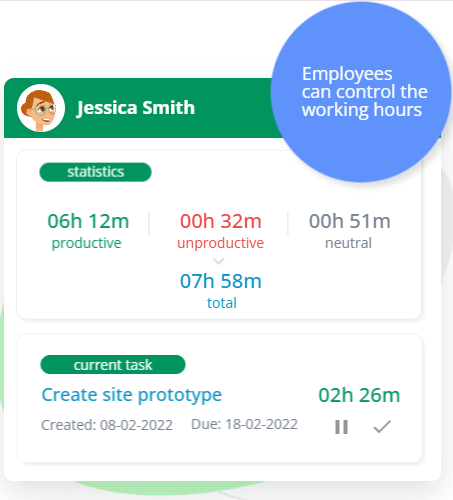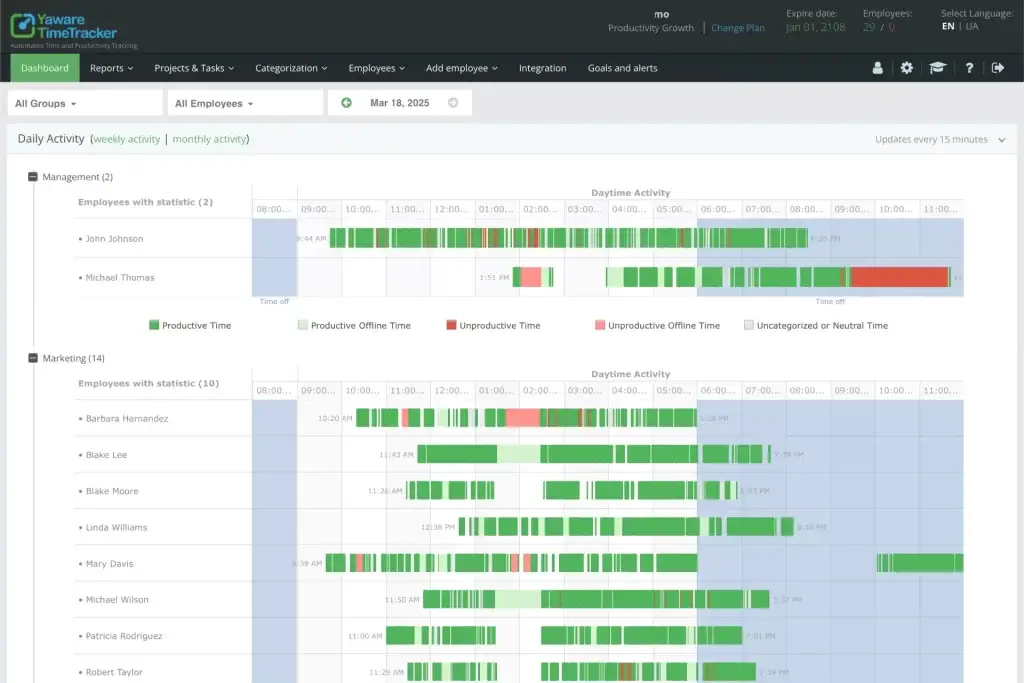83% of CEOs want employees back in the office to “increase productivity.” But new MIT research shows they're solving the wrong problem. Companies using transparent productivity tracking see 31% better team performance than those relying on surveillance or office mandates. The secret? Employees can see their own data.
The surveillance trap that's killing productivity
Traditional employee monitoring backfires spectacularly.
Workers spend more energy appearing busy than being productive. That developer staring at the ceiling for two hours? They're solving a complex problem. But surveillance systems mark it as “unproductive time.”

The result is devastating. Employees game the system, stress levels skyrocket, and top performers quit. You end up measuring activity instead of impact.
One Fortune 500 company discovered their “most monitored” team had the lowest actual output. Why? People focused on looking productive rather than being productive.
What happens when employees control their data
Flip the script. Give workers access to their own productivity insights.

Suddenly, they become optimization partners instead of surveillance subjects. They can see their peak hours, identify energy drains, and make smart decisions about when to tackle different types of work.

The adversarial dynamic disappears. No more cat-and-mouse games. Both manager and employee work from the same data toward shared goals.
Sarah, a marketing director, discovered she was most creative between 10 AM and noon. She moved all brainstorming sessions to that window. Her campaign quality improved 40% in three months.
The numbers that prove transparency works
Organizations switching from surveillance to transparency see immediate improvements:
- 22% lower employee turnover within the first year
- 31% increase in team performance (MIT study)
- 40% reduction in time spent on administrative tasks
- 67% of employees report higher job satisfaction
- 18% improvement in project delivery times
But here's the kicker: these gains compound over time. Teams get better at reading their data and optimizing their approach.
Why the biggest companies are making the switch
Microsoft abandoned their traditional monitoring system in 2023. Result? Employee engagement up 28%, voluntary turnover down 35%.
The reason is simple: trust creates performance, surveillance destroys it.
When people control their productivity data, they naturally want to improve it. When they're being watched without context, they resist and rebel.
Advanced productivity tracking now works like a fitness tracker for work. You see your patterns, understand your rhythms, and make informed changes. Your manager sees team trends and can remove obstacles instead of adding pressure.

Key metrics successful teams track include:
- Deep work sessions versus interrupted time
- High-value activities versus administrative busywork
- Individual productivity cycles and peak performance windows
- Collaboration patterns that boost or drain team velocity
- Resource allocation efficiency across different project types
The data becomes a shared resource for getting better, not a weapon for getting fired.
The future belongs to transparent organizations
Here's what leaders are figuring out: the age of “trust but verify” is over. The new model is “verify and trust.”
Give employees visibility into their work patterns. Share the data that drives decisions. Create psychological safety around productivity discussions.
The companies doing this are winning the talent war. Top performers choose transparency over surveillance every time.
They're also building cultures of continuous improvement driven by insights, not fear. Teams that can see their impact naturally want to increase it.
The question for leaders: are you ready to move beyond surveillance into partnership? Because your competitors already are.

